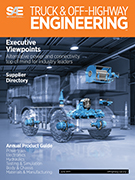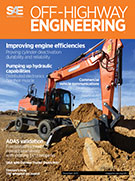Magazine

SAE Truck & Off-Highway Engineering: February 2023
2023-02-09
Virtual powertrain development Simulation is critical for efficient product development, but proper tool selection and efficient data management are keys to success. Blue Arc amps up for EV production Shyft Group's EV subsidiary is lighting the path for the electrification of last-mile delivery vehicles as well as mobile charging solutions. Increasing connectivity in construction Jobsites look to overcome challenges posed by mixed fleets and proprietary telematics to achieve "one-dashboard" vision and increased machine utilization.



















